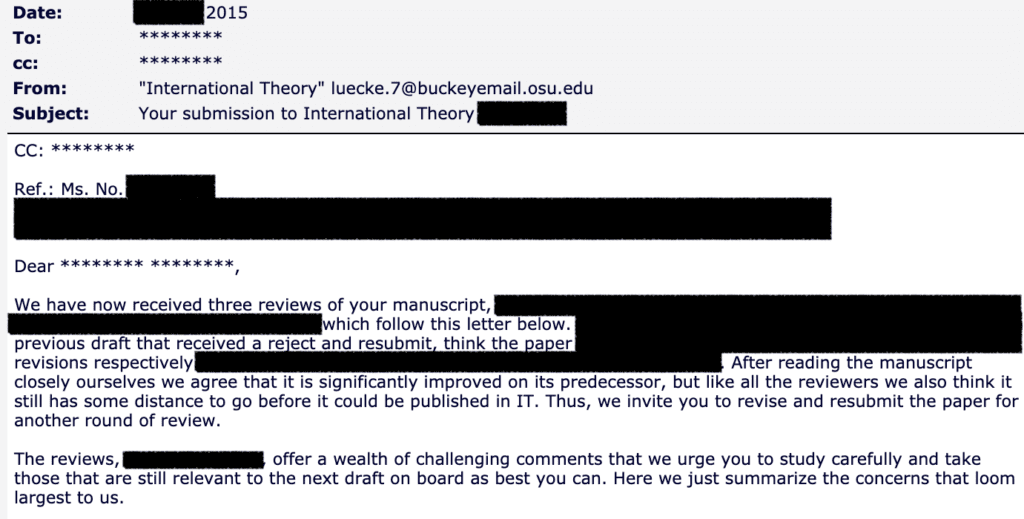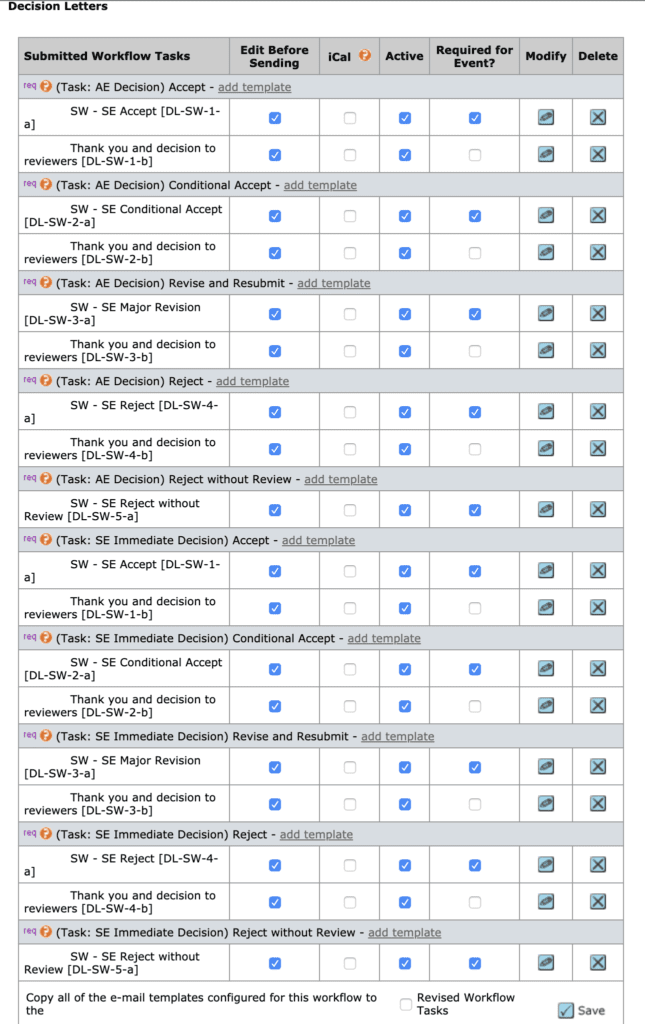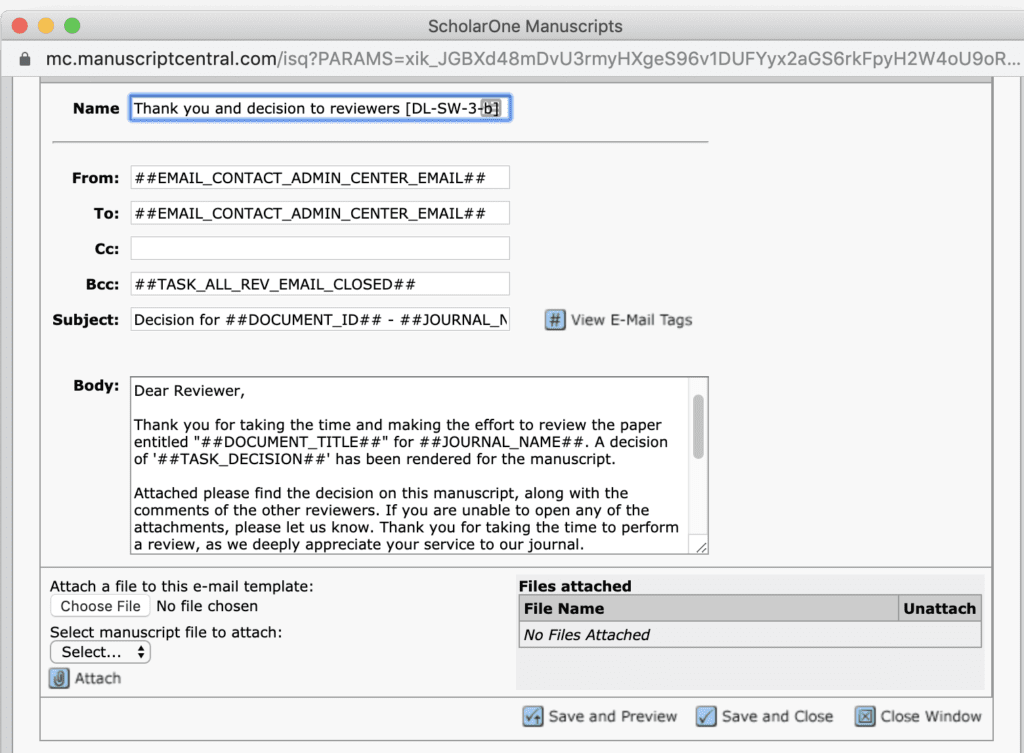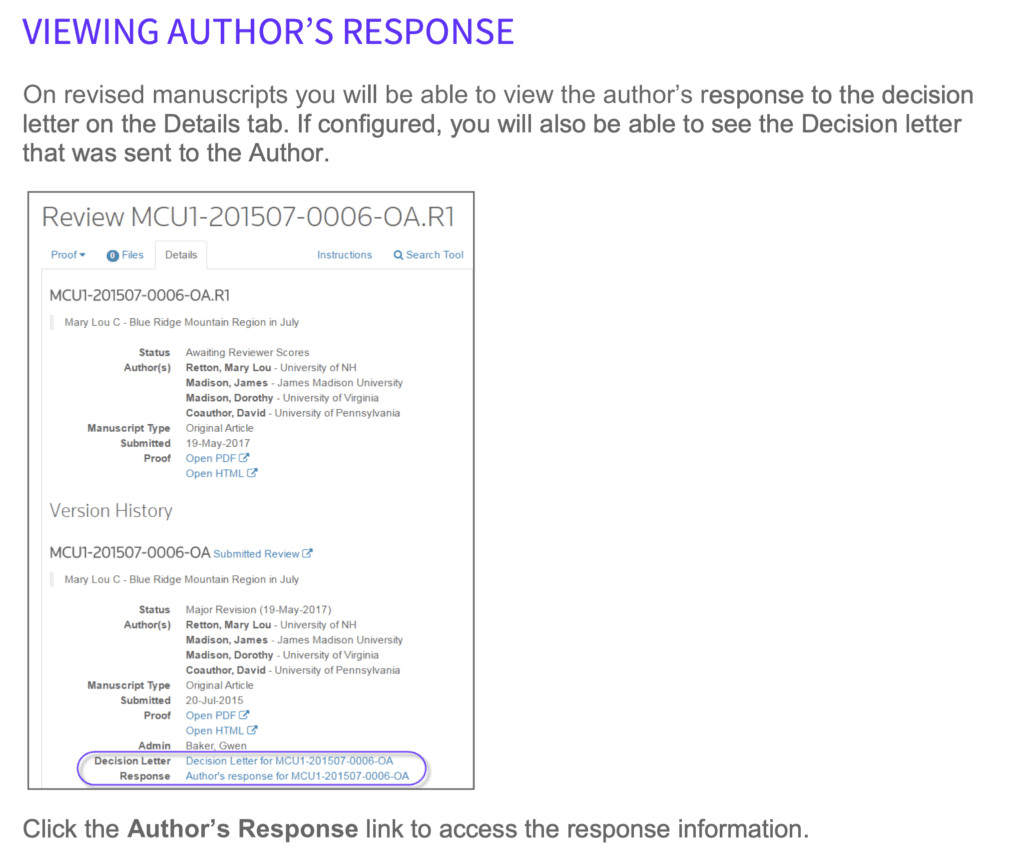Note: This is the third post in an occasional series in which I talk about lessons learned (or related stuff) from my time editing International Studies Quarterly. My prior posts focused on “best practices” for writing decision letters (Part I and Part II).
I won’t knowingly review for a journal that doesn’t, as a matter of policy, share anonymized copies of decision letters and reviewer reports with referees.
Once a journal makes a decision and I don’t receive these materials, I usually check to make sure that mistakes weren’t made – that I didn’t accidentally delete the notification or whatever. If there wasn’t a mistake, and the journal confirms that it doesn’t provide referees with the decision letter and other reports, then I’m done. I let the journal know that I won’t review for them again unless and until it changes its policy.
And I do mean “policy.” It’s not enough for the journal to share this material only when prodded.
Why do I feel so strongly about this? There are a number of reasons why, in my opinion, journals are obligated to provide referees with decision letters and reports.
- It’s the courteous thing to do. Referees invest time and energy into providing feedback; they should know whether and how that feedback mattered to the editorial decision.
- Knowing how seriously the editors took the referee reports is an important part of the general good of editorial transparency. If the editors want to overrule one or more reviewers, that’s within their rights. But it’s inappropriate to obscure that choice from referees.
- The field doesn’t invest a lot of time and energy into training people how to be good peer reviewers. Seeing what the editors did with your report, and how other referees assessed the same manuscript, is an important way for scholars to learn how to be better reviewers.
- Knowing the contents of the editorial decision and the other reports becomes particularly crucial in the context of evaluating a revised and resubmitted paper. Some journals will provide these materials only in the context of an R&R, which is better than not providing them at all – but it’s still inadequate.
I feel so strongly about this that I occasionally make public appeals to other academics to boycott journals that don’t engage in this best practice when it comes to transparency. I made one such call on Facebook and Twitter within the last few days – about the same time that I emailed a journal that hadn’t sent me a decision letter for a manuscript that I’d reviewed. Both an exchange with another former editor and with that journal highlighted something that hadn’t ocurred to me. It isn’t always a matter of not wanting to provide these materials, but not knowing how to do so.
I imagine some readers are thinking: “Wait, what? How can editors not know how to do this?” The answer lies in a basic fact about modern journal editing: most journals are now on one of two online management platforms – ScholarOne (aka Manuscript Central) or Editorial Manager – and how those platforms function shape editorial processes.
As far as I can tell, Editorial Manager makes sharing reviews and decisions with referees easy. It seems to automatically generate an anonymized version of the decision email to send to reviewers.

ScholarOne, at least in the variants I’ve seen, makes things more difficult. It can be configured to automatically generate a “thank you and decision to reviewers” email after the decision email is sent to the author(s), as the image below showcases.

Furthermore, editors can design templates for those emails; the ones we inherited – and passed along – for ISQ were written with the assumption that a copy of the decision letter would be attached.

Note, however, that there’s nothing here that automatically generates an anonymized copy of the decision letter. I’ve read multiple guides, and while there may be a way to automate this task, I’ve never figured it out.
Some configurations of ScholarOne will supposedly make a copy of the “author response” and the decision letter available to reviewers for R&Rs via the details menu. ISQ doesn’t have this functionality, and I doubt reviewers would think to look for it unless they’ve read the ScholarOne Reviewer Guide.

This means (I’m pretty sure) that if you want to always share the decision letter and reviews, you need to cut and paste them into the body of the email before sending, manually attach them, or both.
For our part, we followed the lead of the prior ISQ team and produced PDFs of letters for all decisions that involved peer reviewer. We also – except in very rare cases – copied the referee reports into the decision letter. This has three major advantages.
First, it means only attaching one document to decision emails and to “thank you” letters to emails.
Second, it’s easier to process decisions if you can see all of the feedback in a single document.
Third, editors don’t risk passing along a referee report that retained properties that would unblind reviewers. This is a real issue. Unless ScholarOne has changed how it operates, it doesn’t touch referee reports that are uploaded as PDFs; it simply attaches copies to decision emails.
We originally created one PDF with a salutation to the author – or authors – and one with the salutation removed for referees. But after we once or twice accidentally sent the author version of the letter to referees (doh!), we decided to only create an anonymized version and send that to the author as well. One author found this disrespectful enough to send an annoyed email, but seemed to take it in stride when I explained the reason.
So there you have it. If you’re using ScholarOne and haven’t been sending referees copies of decision letters and reports, you now have some ideas for how you can make it happen. And I can once again feel righteous in saying to everyone else: journals that don’t share decision letters and reports with referees aren’t living up to their obligations, and you should not review for them.


0 Comments